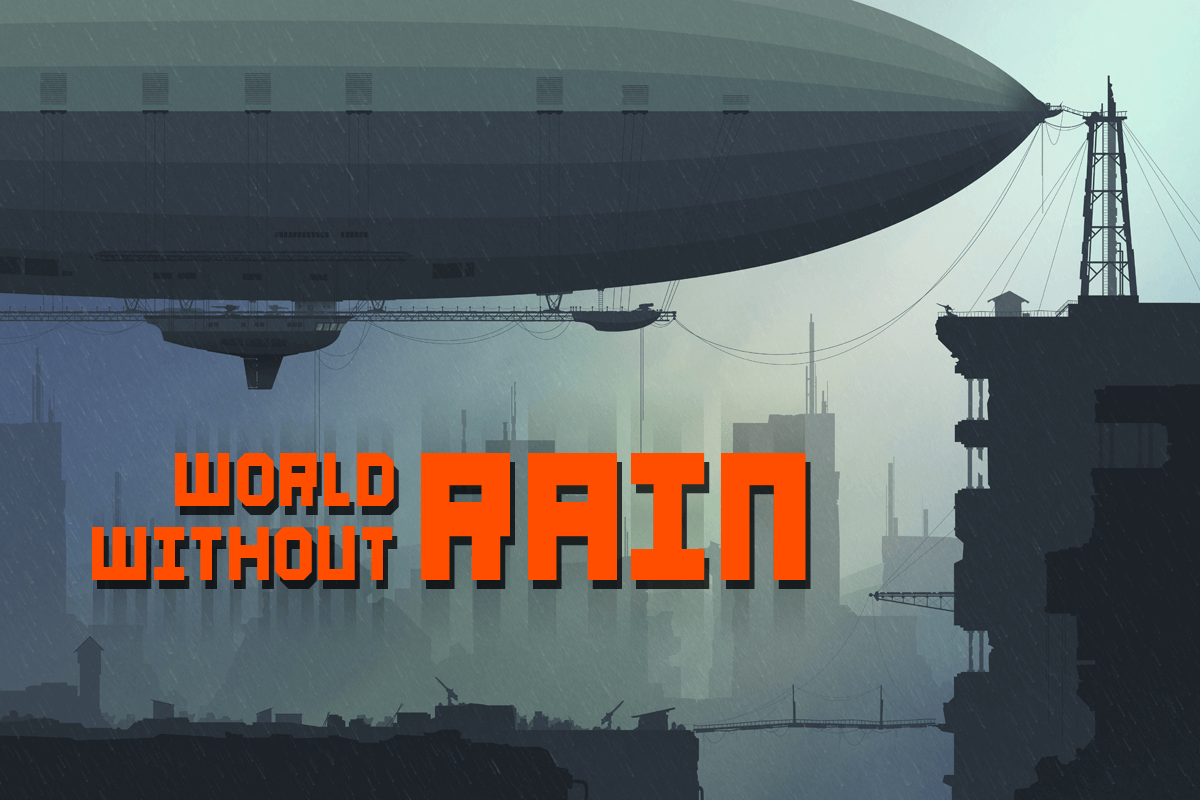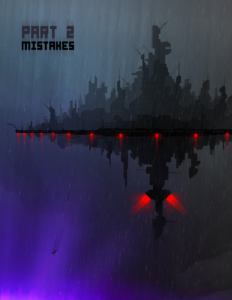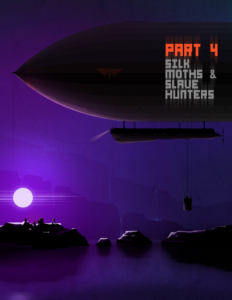VR Design Program Director Celebrates Release Of First Novel
Nathan Prestopnik’s sci-fi adventure ‘World Without Rain’ now available on Amazon

Nathan Prestopnik, Ph.D., director of Shenandoah University’s Bachelor of Arts in Virtual Reality Design program and co-director of the Shenandoah Center for Immersive Learning (SCiL), is in the business of world-building, of creating spaces that people can visit while using the latest and greatest technology in virtual, augmented and extended reality. Recently, Dr. Prestopnik completed work on a project using more traditional means that introduces people to a post-apocalyptic Earth and alternate realities.
 “World Without Rain” is Prestopnik’s debut novel, a work two decades in the making that the SU professor released via Amazon in February. It’s a sci-fi adventure that blends Prestopnik’s love of hydrogen airships, futuristic technology and military history, and reflects – through a different medium – his passion for creating immersive worlds.
“World Without Rain” is Prestopnik’s debut novel, a work two decades in the making that the SU professor released via Amazon in February. It’s a sci-fi adventure that blends Prestopnik’s love of hydrogen airships, futuristic technology and military history, and reflects – through a different medium – his passion for creating immersive worlds.
The story, which takes place in the year 2238, follows physicist Stuart Irving, who has opened a dimensional rift to another world in what could be a potential solution for those living on an Earth that is drowning after 200 years of rain. To escape the story’s main antagonist, Irving enters the rift, kicking off an adventure in an alternate world where genetically engineered monsters stalk a primitive landscape littered with the wreckage of past civilization, and humans survive by never stepping foot on solid ground. Irving is spared by an unlikely ally but gets dragged into a quest built on half-truths, clever tricks and outright lies. When an invasion by the story’s main antagonist boils through the rift, cultures and technologies clash while hydrogen airships deal death from the sky and monsters rage on the ground.
I have always loved rich, detailed stories and worlds – things like ‘Dune’ and ‘Lord of the Rings’ – that seem to have all the depth and complexity of reality. It can be difficult to capture this kind of depth in VR, as amazing as it is, because of the many complex technical and design considerations that constrain such free and imaginative expression,” Prestopnik said. “‘World Without Rain’ was a different kind of canvas for me. The book let me play with exciting moments and entertaining characters in creative ways without worrying about whether a graphics card, tracking system, and CPU could actually make any of that happen.”
Nathan Prestopnik, Ph.D., director of Shenandoah University’s Bachelor of Arts in Virtual Reality Design program
 What eventually became “World Without Rain” began as a screenplay Prestopnik started writing while he was a film student at Syracuse University. He soon realized that the story deserved to be told beyond the bounds of a screenplay.
What eventually became “World Without Rain” began as a screenplay Prestopnik started writing while he was a film student at Syracuse University. He soon realized that the story deserved to be told beyond the bounds of a screenplay.
Prestopnik wrote in “fits and starts” for some time before he fully committed himself to completing the novel around 2015, a drive spurred by his research into gamification coupled with a serious game design project meant to help him write more and make healthier lifestyle choices.
Relying on the valuable feedback from family and friends, several of whom are published writers, Prestopnik went through multiple drafts of the novel until it became the polished version that is now available for purchase in Kindle and paperback versions on Amazon.
“The craft of writing really matters, especially now,” said Prestopnik, noting that so much content that people consume now is “thoughtlessly put together” for clicks and likes, and even by artificial intelligence. “I spent a lot of time trying to make sure that it was good quality – that it was good storytelling but also good writing.”
Prestopnik, whose work at Shenandoah University regularly includes teaching graphic design and visual world-building to students, created all of the artwork for “World Without Rain,” including the cover and the illustrations that introduce each of the six parts of the novel.
 Prestopnik acknowledged that he broke some of the rules for first-time authors – for one, although the book has a rapid pace, it’s longer than publishers usually suggest – and he found himself workshopping and re-workshopping scenes to avoid indulging in too much world-building and description as he wrote (his work in crafting environments in VR/AR/XR often requires attention to the finest details). He also took some creative liberties with the airship battles in the book, opting for a fictionalized approach that described the scenes more like naval battles than historical aerial combat.
Prestopnik acknowledged that he broke some of the rules for first-time authors – for one, although the book has a rapid pace, it’s longer than publishers usually suggest – and he found himself workshopping and re-workshopping scenes to avoid indulging in too much world-building and description as he wrote (his work in crafting environments in VR/AR/XR often requires attention to the finest details). He also took some creative liberties with the airship battles in the book, opting for a fictionalized approach that described the scenes more like naval battles than historical aerial combat.
But Prestopnik, who also has a Bachelor of Arts in History, stayed true to his descriptions of the airships themselves. Prestopnik drew inspiration from the World War I era in creating the settings and locations in “World Without Rain,” and he enjoyed the juxtaposition of the contemporary and futuristic technology prevalent in the worlds within the story.
One of my favorite things about ‘World Without Rain’ is that, at heart, it’s a story about teaching and learning. The main character, Irving, is on a journey of self-discovery. His ally Marie, who follows her own agenda, turns into his mentor and guide. It just so happens that their partnership as teacher and student takes place in a world of monsters, air pirates, battles, and spies. Irving and Marie’s classroom is far more exciting than mine!”
Nathan Prestopnik





